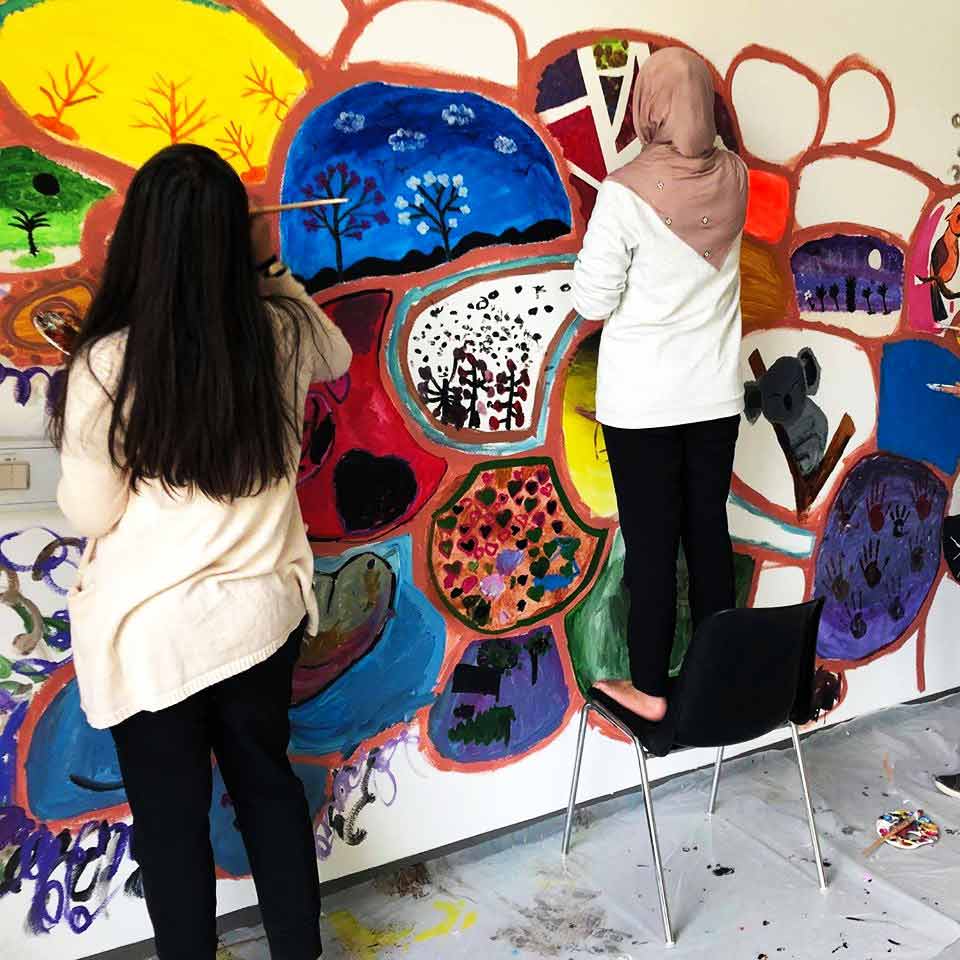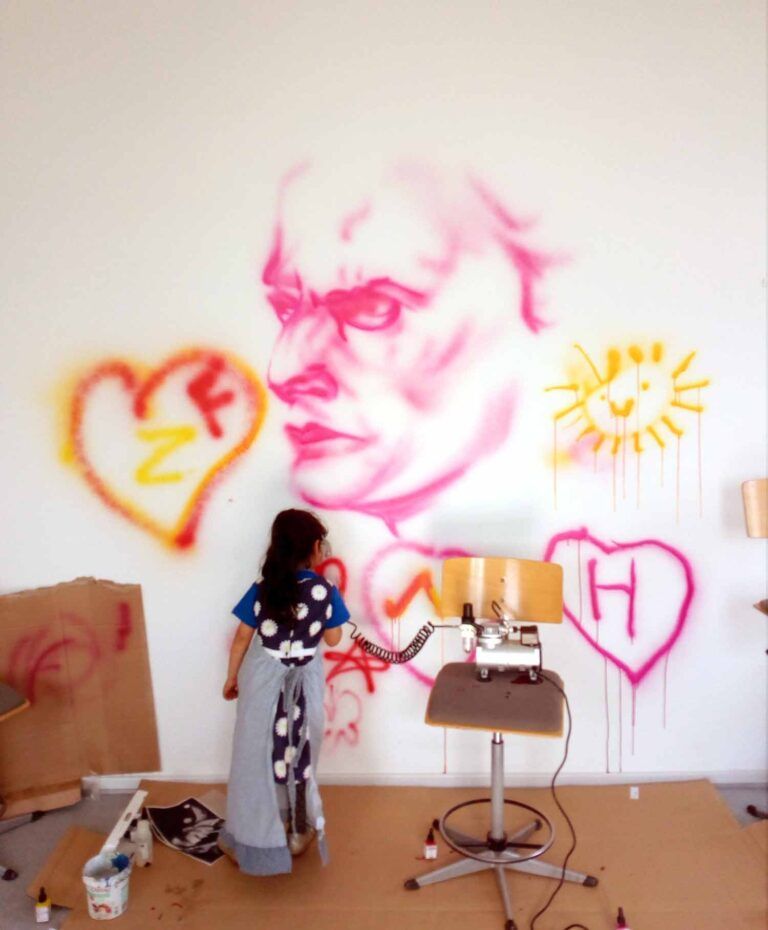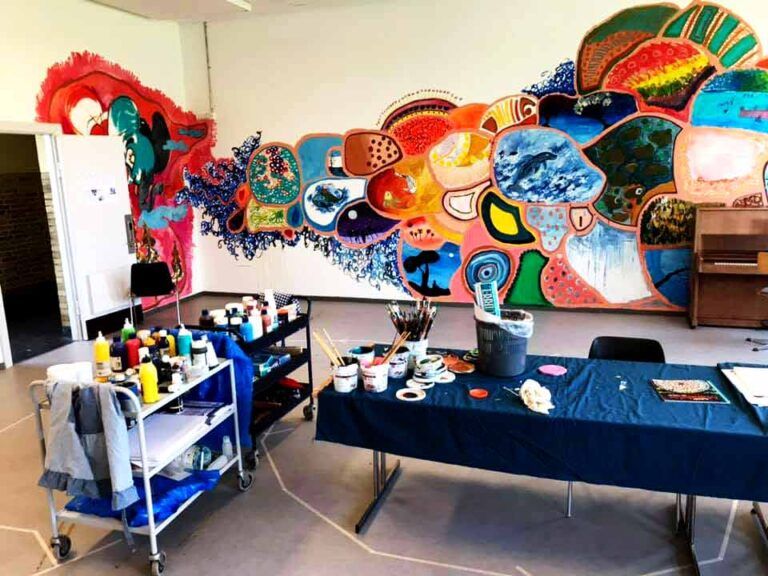I was part of this heart-filled and meaningful project from the beginning of the project from March to July 2019. It made a huge impression to meet these amazing and talented children. I was grateful for their openness and receptivity to let me/us into their lives through art.
4 artists were responsible for the project. Jeanette Uldall, Jakob Ingvorsen, Charlotte Tønder and Camilla Blachmann. Since then, Camilla Blachmann has taken it further.
Our goal with Emergency Art was:
- to highlight the circumstances of the children in Sjælsmark. With the possibility of expanding to other asylum locations in Denmark.
- To innovate and create a free space.
- To trigger the effect art has in relation to being a human being.
- Creating identity and presence.
In 2020, the children will leave Sjælsmark and move to Red Cross Center Avnstrup, where the project will fortunately continue.
My good colleague Jakob Ingvorsen has described his special efforts at Sjælsmark here –> Read more


Painting on walls - is it allowed?
Art project - open opportunities for expression.
Here I am standing in front of one of the mega walls at Sjælsmark that the children were allowed to paint on. They loved the “forbidden”, painting on the wall and then in a barracks. We also painted on scooters, canvases, paper and other creative things we could find.
The kids are just great at expressing themselves and having fun at the same time.


The story behind Relief Art.
Camilla Blachmann, Özlem Cekic and Bent Melchior went to visit the camp at Sjælsmark because they had read about the conditions offered to people whose only crime was staying in this country.
Colorless conditions at Sjælsmark.
The surroundings at Sjælsmark appeared gray and worn. The premise seems to be to motivate residents to return home to intolerable conditions. The method is ineffective, but it makes no difference. Any decoration at Sjælsmark is banned, so you can’t add any color to the drab walls, due to conservation regulations. Music is forbidden on camp grounds, so you’ll have to take the bus into town to listen to it, or walk if you can’t afford the bus. Residents are also not allowed to cook their own food, as it is explained as a fire hazard.
The conditions at Sjælsmark are therefore in no way humane, so we want to do activities that can help break the boredom and treat people like human beings.
A Sustainable Development Project!
The children’s group at Sjælsmark is composed of children from many cultures, each with their own approach to expressing themselves. For some of the children, this may be the first time they have the opportunity to shape a space and express themselves through art. Therefore, Emergency Art will be characterized by meeting the children right where they are. We want to make sure that all skills come into play. There should be room for you to come once or come every time. The project is not age-restricted, so you can be either 3 or 18 years old. It is important for our project that we find the means to make it a lasting project, so they know they can count on us and we show stability and continuity.
What can Kunsten på Sjælsmark do?
Art is a neutral language where people can meet and new skills can come into play. It provides a space to be who you are, with the identity you each come with and contributes to a free space. Art can be just the place where the challenges of being in a deportation center can be forgotten for a while. The children also meet adults who focus on things other than everyday practice.
The project focuses on visual art in both large and small formats. Our plan is to paint on the walls, giving you the opportunity to express yourself and make a very visible and lasting impression on your surroundings.
The children and their parents will meet four professional artists, from different cultural backgrounds, who share a common interest in working with art in the intercultural field. They all have extensive and relevant experience in involving children in co-creation processes. The legacy lies in the artists’ take on aesthetics and genres. Which children must be involved in and interpret into their own universe. Both art and heritage are available, as artifacts and expressions, but especially through the children’s own references and interpretations.

